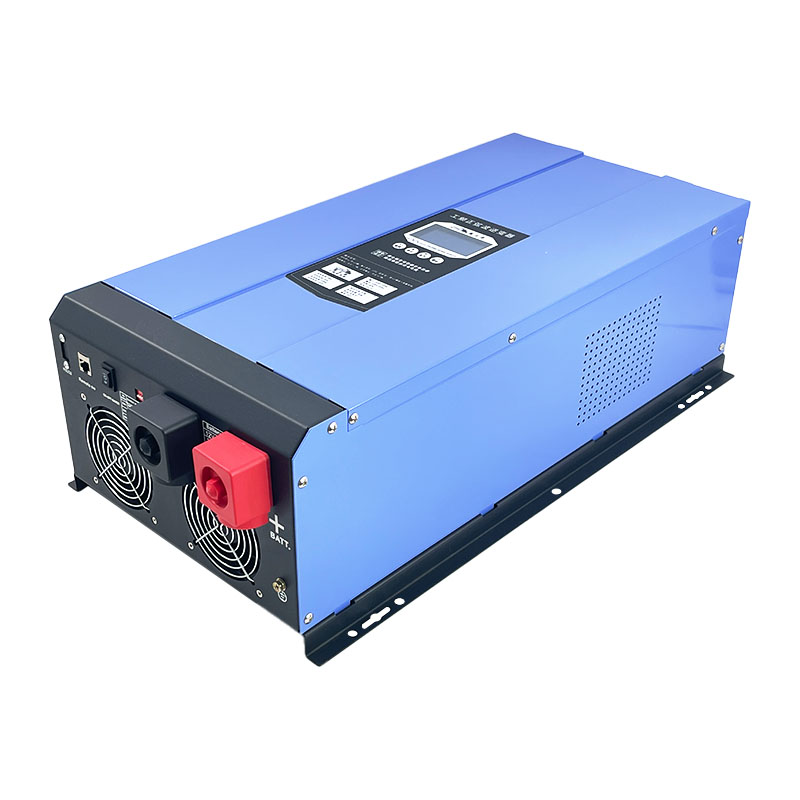Solar Inverter - What it is and how to choose the right one
2024-06-19
What is a Solar Inverter?
A solar inverter is a crucial component of a solar power system that converts the direct current (DC) electricity generated by solar panels into alternating current (AC) electricity, which can be used by household appliances and fed into the electric grid. Solar inverters are essential for the proper functioning of solar power systems, ensuring that the power generated by the panels is compatible with the electrical systems in homes and businesses.
Types of Solar Inverters
1. String Inverters:
- Description: Commonly used in residential and commercial solar installations. Multiple solar panels are connected in series to form a string, and several strings can be connected to a single string inverter.
- Advantages: Cost-effective, easy to maintain, and reliable.
- Disadvantages: Performance can be affected if one panel in the string is shaded or malfunctioning.
2. Microinverters:
- Description: Installed on each solar panel, converting DC to AC at the panel level.
- Advantages: Maximizes power output from each panel, reduces shading impact, and allows for easy monitoring and expansion.
- Disadvantages: Higher initial cost and potentially more complex installation.
3. Power Optimizers:
- Description: Used in conjunction with a central inverter, power optimizers are attached to each solar panel to optimize its performance.
- Advantages: Mitigates shading issues and panel mismatches, improving overall system efficiency.
- Disadvantages: Adds complexity and cost compared to string inverters.
4. Hybrid Inverters:
- Description: Combine the functionality of a solar inverter with a battery inverter, allowing for energy storage.
- Advantages: Provides flexibility to store excess energy for later use, enhances energy independence.
- Disadvantages: More expensive than standard inverters, complex installation.
5. Off-Grid Inverters:
- Description: Designed for systems that are not connected to the utility grid, often paired with battery storage.
- Advantages: Enables complete energy independence, suitable for remote areas.
- Disadvantages: Typically more expensive, requires battery storage and more maintenance.
How to Choose the Right Solar Inverter

When choosing a solar inverter, several factors must be considered to ensure it meets your specific needs and maximizes the efficiency and performance of your solar power system.
1. System Size and Capacity:
- Inverter Capacity: Match the inverter’s capacity (kW) to the size of your solar panel array. Ensure the inverter can handle the peak power output of your system.
- Scalability: Consider future expansion plans and choose an inverter that can accommodate additional panels if needed.
2. Efficiency:
- Inverter Efficiency: Look for high-efficiency inverters (typically 95-98%) to maximize the energy conversion from DC to AC.
- Peak Efficiency: Check the inverter’s peak efficiency and how it performs at different load levels.
3. Compatibility:
- Panel Compatibility: Ensure the inverter is compatible with your specific solar panels and their voltage and current characteristics.
- Battery Integration: If you plan to use battery storage, choose an inverter that can integrate with your chosen battery system.
4. Environmental Factors:
- Temperature Range: Ensure the inverter can operate efficiently within the temperature range of your installation location.
- IP Rating: Check the inverter’s Ingress Protection (IP) rating to ensure it is suitable for indoor or outdoor installation.
5. Features and Monitoring:
- Monitoring Capabilities: Choose an inverter with robust monitoring capabilities, allowing you to track the performance of your system in real-time.
- Smart Features: Some inverters come with smart features such as remote monitoring, automatic system optimization, and grid-tied functionalities.
6. Warranty and Support:
- Warranty: Look for inverters with long warranties (typically 5-10 years) and check what is covered under the warranty.
- Customer Support: Consider the manufacturer’s reputation for customer support and the availability of technical assistance.
7. Cost:
- Budget: Balance the cost of the inverter with its features, efficiency, and reliability. Higher initial costs may be justified by long-term savings and better performance.
- Installation Costs: Factor in the installation costs, which can vary based on the complexity of the inverter system.
8. Compliance and Certification:
- Standards Compliance: Ensure the inverter complies with relevant safety and performance standards in your region.
- Grid Compliance: For grid-tied systems, the inverter must meet the utility’s requirements for interconnection.
Example of Choosing a Solar Inverter
If you have a 5 kW solar panel system for a residential setup:
1. System Size: Choose a 5 kW inverter, ensuring it matches the panel output.
2. Efficiency: Opt for an inverter with at least 97% efficiency to maximize energy conversion.
3. Compatibility: Ensure the inverter is compatible with your solar panels and potential battery storage.
4. Environmental Suitability: Select an inverter with an IP65 rating for outdoor installation, capable of operating in your climate.
5. Features: Look for an inverter with integrated monitoring capabilities for real-time performance tracking.
6. Warranty: Choose an inverter with a 10-year warranty for long-term reliability.
7. Cost: Consider total costs, including installation, and balance with the inverter’s benefits and features.
8. Compliance: Ensure the inverter meets local safety and grid interconnection standards.
By considering these factors, you can choose the right solar inverter that best suits your needs, ensuring efficient and reliable operation of your solar power system.


